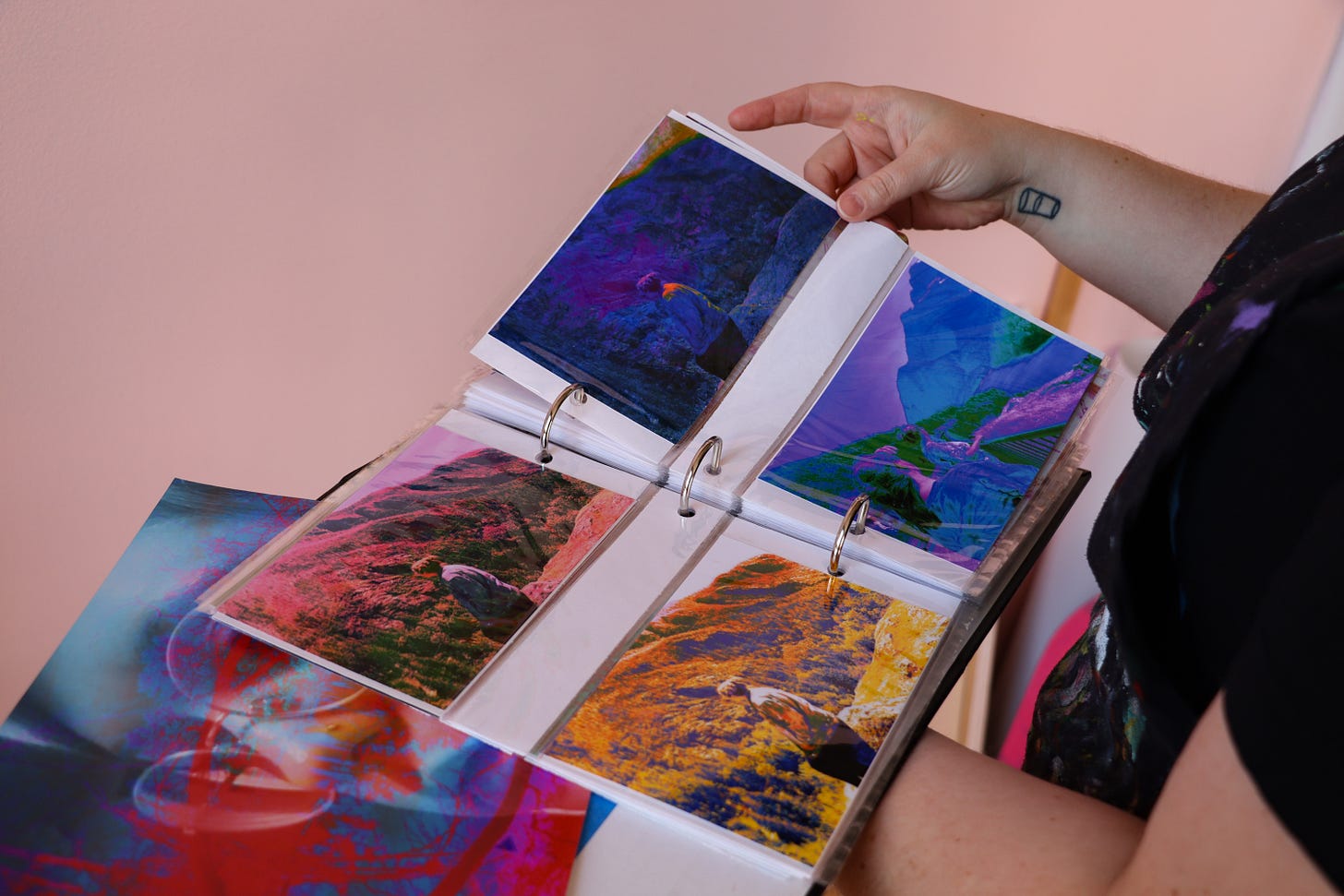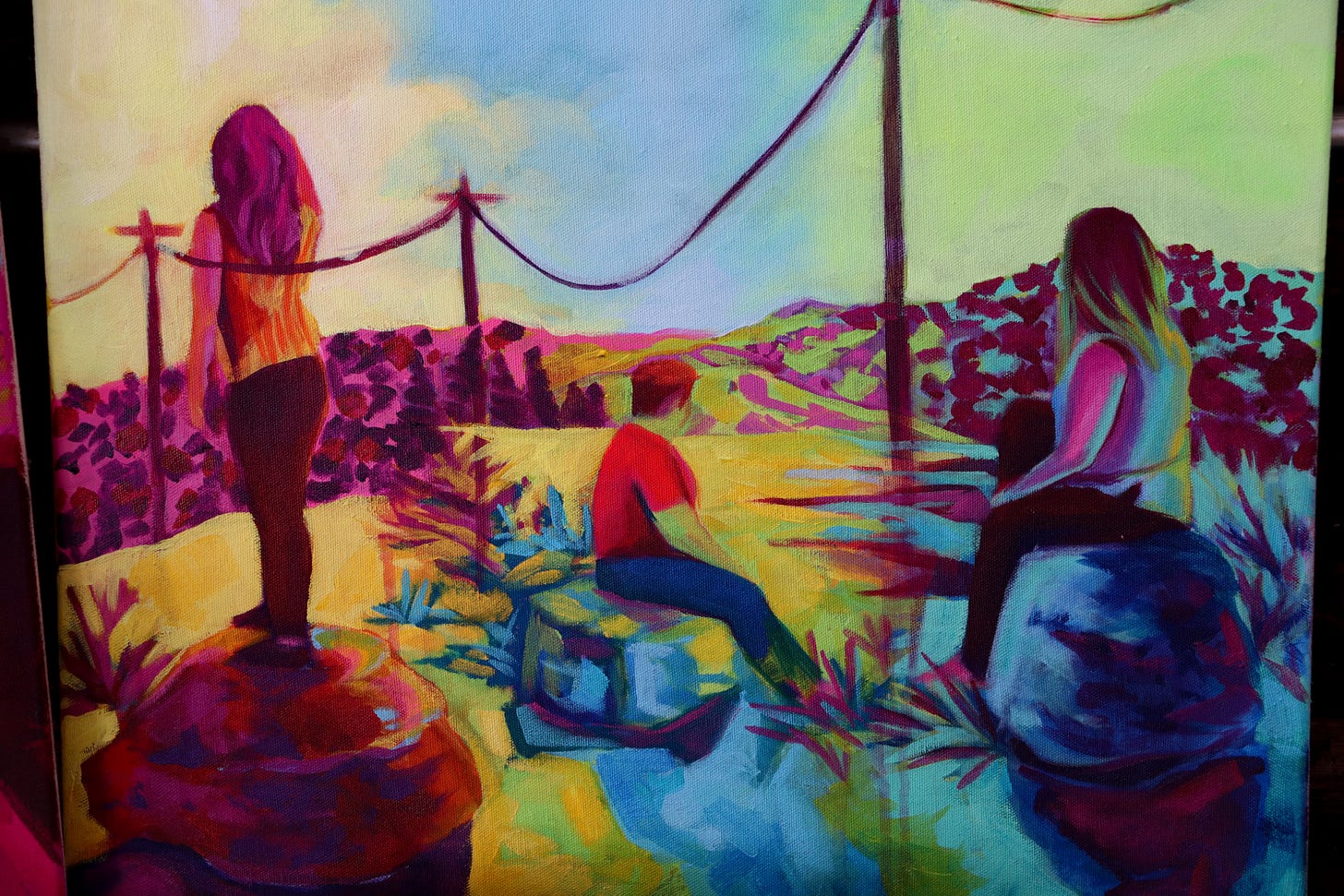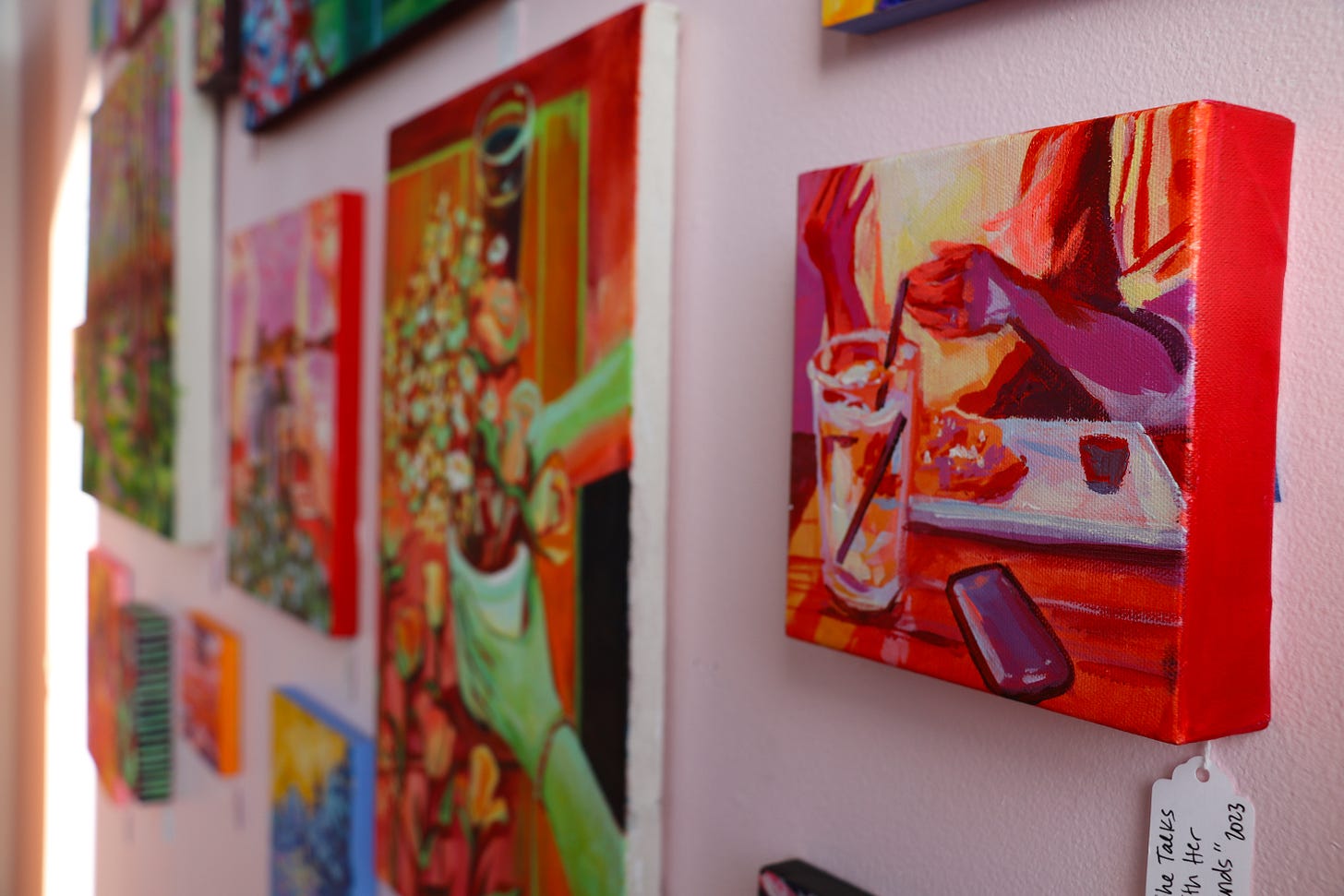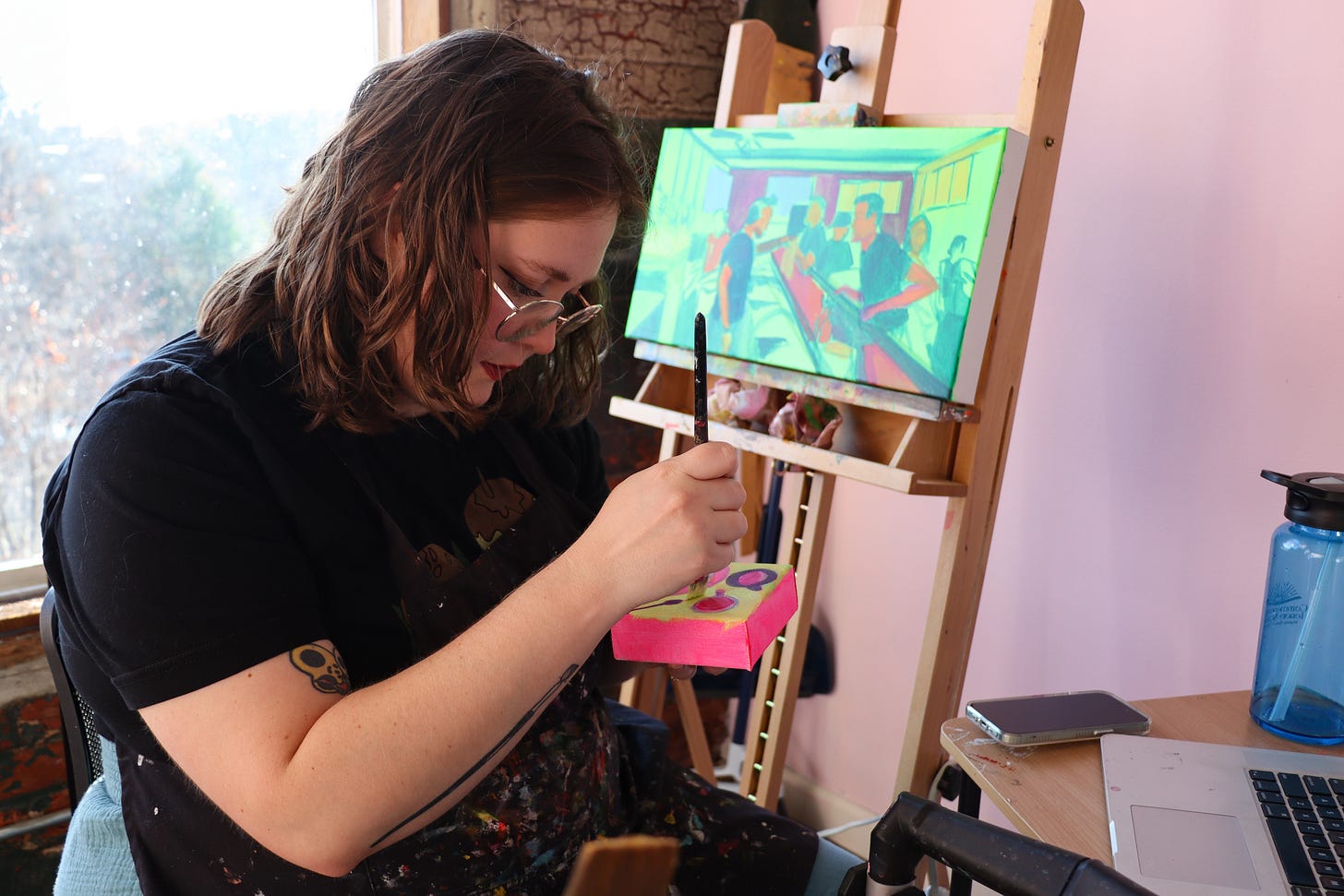By Kae Partida
Kait Steward, in Studio 325, creates artwork that feels like a modern-day archive of experiences—snapshots frozen in time, yet remade into something brighter, more dreamlike, and sometimes a little strange.
"I deep-fry them in Photoshop"
Her process starts with photos, each one representing a moment that stands out in her life—some from vacations she went on as a child, others from spontaneous road trips with friends. Every photo carries a unique emotional weight, a moment she wants to keep alive in a way that’s true to her memory of it.
But Kait doesn’t just leave them as they are. "I deep-fry them in Photoshop," she says with a smile, referring to her technique of intensifying the colors and saturating the image to bring out something surreal, yet strangely familiar. "I play with the colors until they look like reality, but a more vibrant alternative," she adds. The resulting images are a kaleidoscope of bright, bold hues, where the boundaries between memory and imagination blur.
For Kait, this process of digital manipulation often involves numerous iterations. "I feel like for every single painting, there’s about nine digital sketches of it in different colors," she shares. This constant experimenting, adjusting, and refining allows her to explore the limits of each image and its emotional resonance before it’s finalized.
One thing that makes Kait’s work stand out lies in her approach to layering. When asked what draws her to the layering process, she explains, "I’m really interested in memory, and I like this idea that when we look back on moments, we aren’t actually looking back at the true experience, but rather our recollection. So, every time you dig it up, it’s slightly less true because you’re seeing the memory of the memory, of the memory, of the memory."
This layering reflects the very way our minds work when we revisit the past: as time goes on, our memories become distorted, shifting and reshaping with each recollection. "I feel like when you look for one specific time or one specific moment, other things pop up naturally that kind of go hand-in-hand," she continues. "So, whether you’re looking at an image of a friend and you think of another friend, or you’re looking at an image of a landscape and you can’t help but think about your childhood, these moments start to overlap. They get confused and complicated, or stained, and they turn different colors. So, that’s where the layering comes from."
This idea of shifting colors—both literal and metaphorical—is central to her work. "It’s not rose-colored glasses all the time," Kait reflects. "Sometimes it’s blue, sometimes it’s orange." Her palette and process underscore the emotional complexity of revisiting memories: some are bright and joyful, while others take on a more somber or unexpected tone. The interplay of hues mirrors the way memories evolve and change, shaped by both time and emotion.
Kait’s use of layers is not only a technique but a metaphor for how memory itself works—not a static, singular image, but a fluid and evolving collection of impressions, each one tinged by the passage of time. As she adds layer upon layer to her photos, she’s building not just the image, but the idea that memory is an intricate, often fractured mosaic of the past. This is supported by research showing that every time we recall a memory, it’s subject to change. As we reconstruct the past, new details can be unintentionally added, and others may be distorted or lost. Daniel Schacter, a renowned cognitive psychologist, describes memory as a “fragile, reconstructive process” influenced by emotion, context, and time, which makes it vulnerable to misrepresentation. Kait’s artistic layering mirrors this process, emphasizing how the act of remembering transforms the past into something both deeply personal and ever-changing.
Kait’s art, in many ways, reflects how we experience life: a complex mix of reality, emotion, and the layers of meaning we add to our memories. It’s a visual representation of how the past is never just what it seems. For Kait, each captive image of her life is a chance to delve into her own archive, pulling something new from a place that feels personal and universally relatable. Visit Kait, in Studio 325 of Lowe Mill ARTS & Entertainment, to see how she transforms fragments of memory into stunning works of art—and discover how her process might help you reflect on your own memories.
Reference
Schacter, D. L. (1999). The seven sins of memory: Insights from psychology and cognitive neuroscience. American Psychologist, 54(3), 182–203. https://doi.org/10.1037/0003-066X.54.3.182








